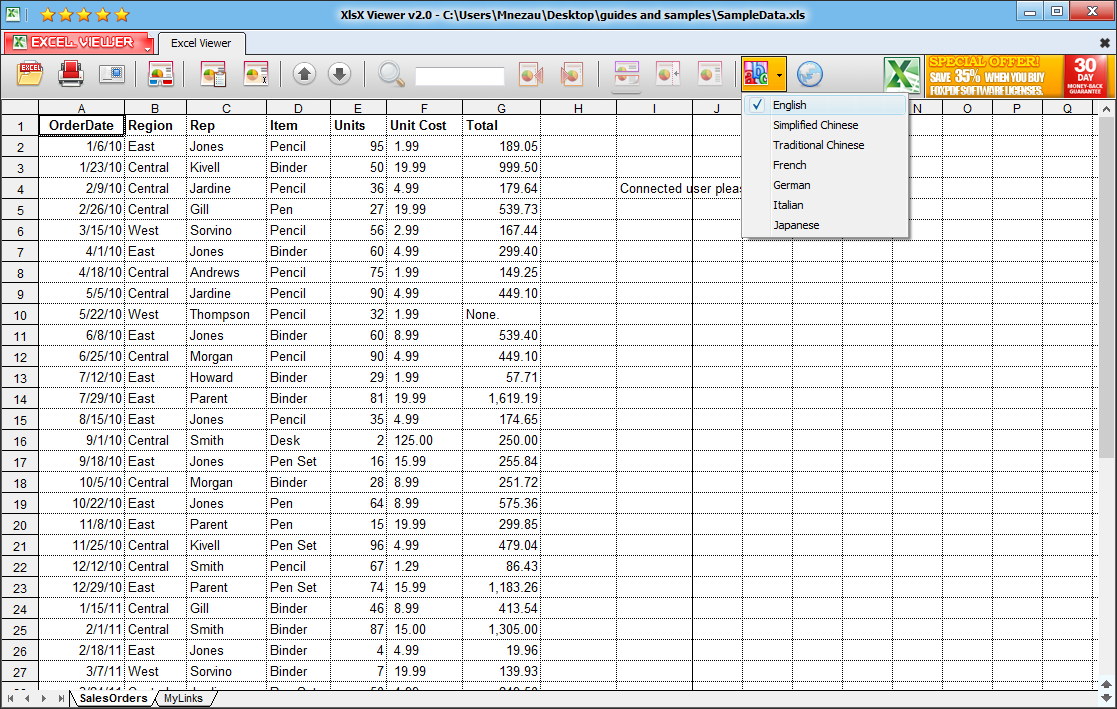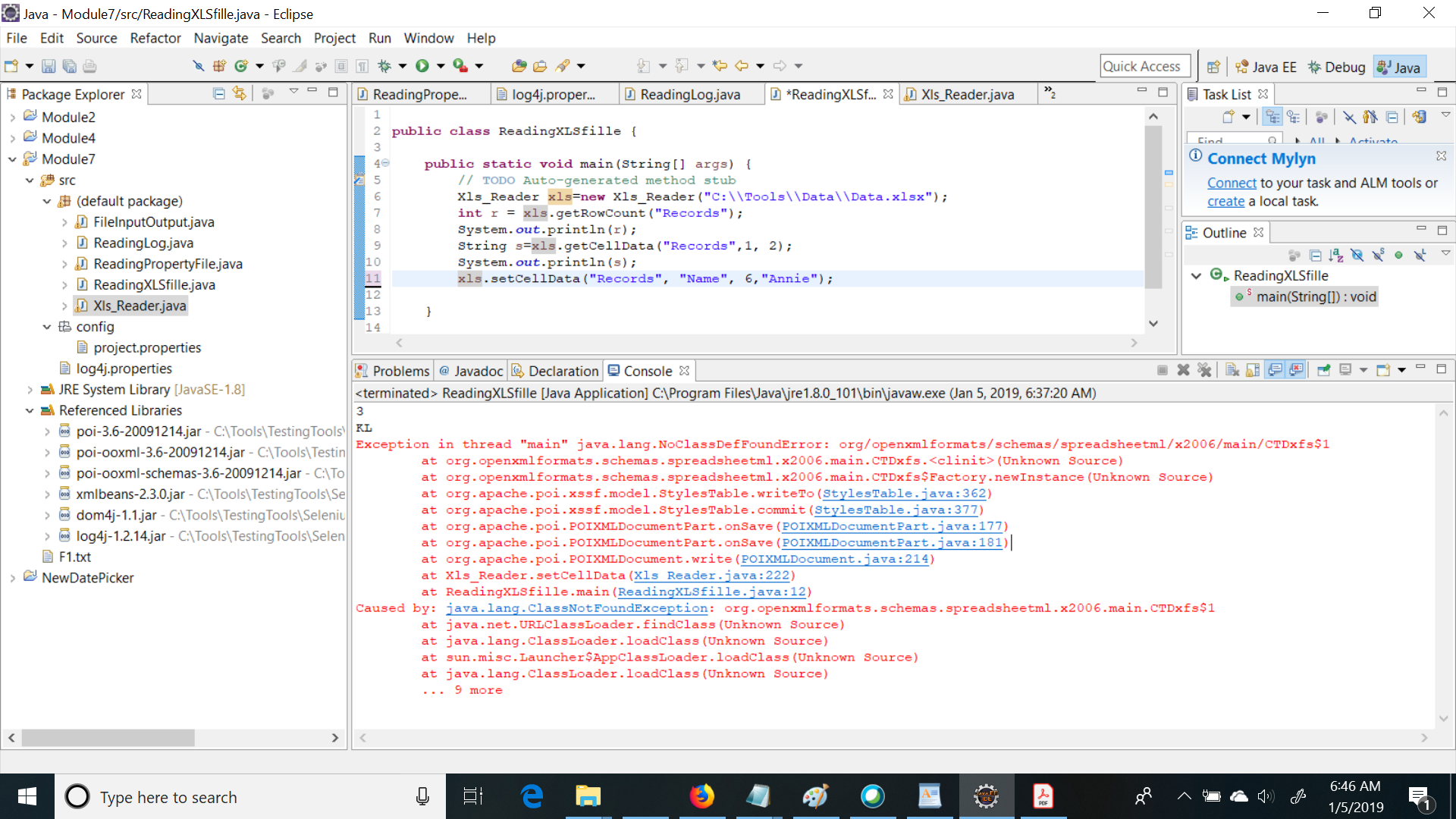| Author: | Eric Gazoni, Charlie Clark |
|---|---|
| Source code: | https://foss.heptapod.net/openpyxl/openpyxl |
| Issues: | https://foss.heptapod.net/openpyxl/openpyxl/-/issues |
| Generated: | Mar 09, 2021 |
| License: | MIT/Expat |
| Version: | 3.0.7 |
How to Read an Excel (xlsx) File in Python. Now, in this section, we will be reading a xlsx file in Python using openpyxl. In a previous section, we have already been familiarized with the general template (syntax) for reading an Excel file using openpyxl and we will now get into this module in more detail. XLS Reader is a simple freeware for viewing spreadsheet documents created by Microsoft Excel, a completely free Excel file viewer. Directly under the src folder, create a folder named data and place an Excel file named excel-file-to-read.xlsx in it. Of course, you can name the folder and file whatever you want; just bear in mind to change their names accordingly in the code snippet above. XLSX Viewer Free is a free tool that allows users to view XLS files without having the Microsoft Excel program installed on their PCs. It is worth noting that with this program you can only open and print XLS files. Creating and editing files is not possible. Alternative spelling: RecoveryToolboxForExcelInstall1.0.exe.
Xlsx Reader free download - Foxit Reader, ZIP Reader, PDF Reader for Windows 7, and many more programs.
Introduction¶
openpyxl is a Python library to read/write Excel 2010 xlsx/xlsm/xltx/xltm files.
It was born from lack of existing library to read/write natively from Pythonthe Office Open XML format.
All kudos to the PHPExcel team as openpyxl was initially based on PHPExcel.

Security¶
By default openpyxl does not guard against quadratic blowup or billion laughsxml attacks. To guard against these attacks install defusedxml.
Mailing List¶
The user list can be found on http://groups.google.com/group/openpyxl-users
Sample code:
Documentation¶
The documentation is at: https://openpyxl.readthedocs.io
- installation methods
- code examples
- instructions for contributing
Release notes: https://openpyxl.readthedocs.io/en/stable/changes.html
Support¶
This is an open source project, maintained by volunteers in their spare time.This may well mean that particular features or functions that you would likeare missing. But things don’t have to stay that way. You can contribute theproject Development yourself or contract a developer for particularfeatures.
Professional support for openpyxl is available fromClark Consulting & Research andAdimian. Donations to the project to support furtherdevelopment and maintenance are welcome.
Bug reports and feature requests should be submitted using the issue tracker. Please provide a fulltraceback of any error you see and if possible a sample file. If for reasonsof confidentiality you are unable to make a file publicly available thencontact of one the developers.
The repository is being provided by Octobus andClever Cloud.
How to Contribute¶
Any help will be greatly appreciated, just follow those steps:
1.Please join the group and create a branch (https://foss.heptapod.net/openpyxl/openpyxl/) andfollow the Merge Request Start Guide.for each independent feature, don’t try to fix all problems at the sametime, it’s easier for those who will review and merge your changes ;-)
2.Hack hack hack
3.Don’t forget to add unit tests for your changes! (YES, even if it’s aone-liner, changes without tests will not be accepted.) There are plentyof examples in the source if you lack know-how or inspiration.
4.If you added a whole new feature, or just improved something, you canbe proud of it, so add yourself to the AUTHORS file :-)
5.Let people know about the shiny thing you just implemented, update thedocs!
6.When it’s done, just issue a pull request (click on the large “pullrequest” button on your repository) and wait for your code to bereviewed, and, if you followed all theses steps, merged into the mainrepository.
For further information see Development
Other ways to help¶
There are several ways to contribute, even if you can’t code (or can’t code well):
- triaging bugs on the bug tracker: closing bugs that have already beenclosed, are not relevant, cannot be reproduced, …
- updating documentation in virtually every area: many large features havebeen added (mainly about charts and images at the moment) but without anydocumentation, it’s pretty hard to do anything with it
- proposing compatibility fixes for different versions of Python: we support3.6, 3.7, 3.8 and 3.9.
Installation¶
Install openpyxl using pip. It is advisable to do this in a Python virtualenvwithout system packages:

Note
There is support for the popular lxml library which will be used if itis installed. This is particular useful when creating large files.
Xlsx Reader Online
Warning
Xlsx Reader Python
To be able to include images (jpeg, png, bmp,…) into an openpyxl file,you will also need the “pillow” library that can be installed with:
or browse https://pypi.python.org/pypi/Pillow/, pick the latest versionand head to the bottom of the page for Windows binaries.
Working with a checkout¶
Sometimes you might want to work with the checkout of a particular version.This may be the case if bugs have been fixed but a release has not yet beenmade.
Usage examples¶
Tutorial¶
- Tutorial
- Playing with data
- Data storage
Cookbook¶
- Simple usage
Performance¶
- Performance
- Benchmarks